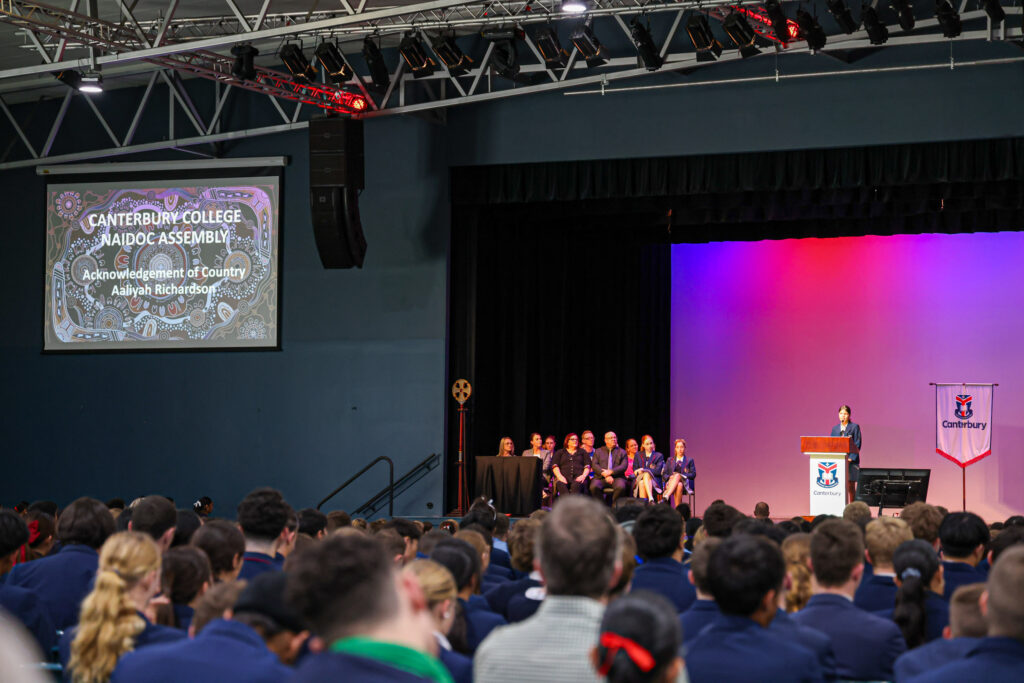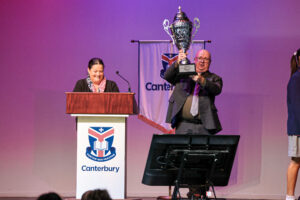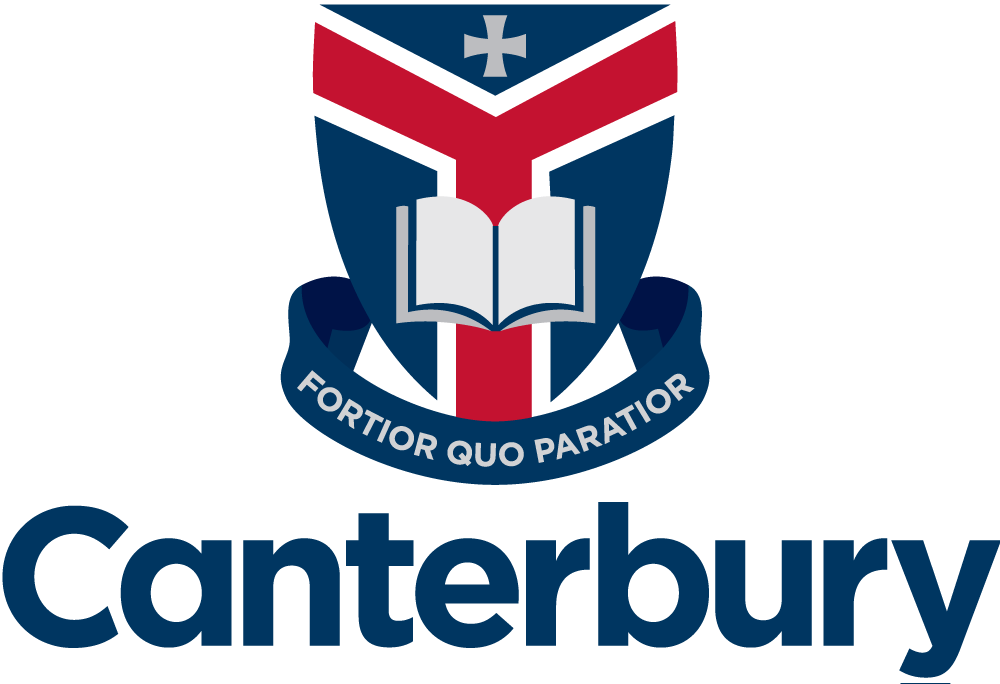2024 NAIDOC Week School Assembly

On Thursday afternoon we celebrated NAIDOC Week with a special School Assembly honouring Aboriginal and Torres Strait Islander peoples, cultures, stories and histories.
Students learned about the significance and history of NAIDOC – which stands for the National Aborigines and Islanders Day Observance Committee, highlighting the achievements and resilience of Indigenous peoples.
We also celebrated this year’s QISSN Canterbury Taipans Netball team’s incredible victory up in Townsville over the mid-year school holidays.
Our squad went undefeated through the rounds and made history by winning their third consecutive championship.
Our Netball Captain Kaylee Tamala and Principal Mr Dan Walker jointly presented the QISSN championship trophy to the gathered student body.
Congratulations to all the players for their outstanding performance and sportsmanship.


——————–
NAIDOC Explanation
NAIDOC stands for National Aborigines and Islanders Day Observance Committee.
Its origins can be traced to the emergence of Aboriginal groups in the 1920s which sought to increase awareness in the wider Australian community of the status and treatment of Aboriginal and Torres Strait Islander Australians.
National NAIDOC Week celebrations are held across Australia in the first week of July each year (Sunday to Sunday), to celebrate and recognise the history, cultures and achievements of Aboriginal and Torres Strait Islander peoples.
NAIDOC Week is an opportunity for ALL Australians to learn about First Nations cultures and histories, and participate in celebrations of the oldest, continuous living cultures on earth.
NAIDOC History
On 26 January 1938, while many Australians celebrated the 150th anniversary of the landing of the First Fleet, a group of over 1,000 Aboriginal people gathered at Australia Hall in Sydney to call for full citizenship status and laws to improve the lives of First Nations people.
As one of the first major civil rights gatherings in the world, this day became known as the Day of Mourning.
Since then, National NAIDOC Week has grown to become both a commemoration of the first Day of Mourning, as well as a celebration of the history, culture and excellence of First Nations people.
From 1940 until 1955, the Day of Mourning was held annually on the Sunday before Australia Day and was known as ‘Aborigines Day’.
In 1955, ‘Aborigines Day’ was shifted to the first Sunday in July, when it was decided that the day should also become a celebration of Aboriginal culture, as well as a day of protest.
In 1974, for the first time, the NAIDOC Committee was composed entirely of Aboriginal representatives.
The following year, it was decided that NAIDOC be expanded to become a week of celebrations, from the first to the second Sunday in July.
NAIDOC Theme & Artwork
This year’s theme is: ‘Keep the fire burning: Blak, Loud and Proud!’ and celebrates the unyielding spirit of Indigenous communities.
The artwork on screen is titled: ‘Urapun Muy’ by Deb Belyea – coming from the Kalaw Kawaw Ya dialect of the Top Western Islands of the Torres Strait, and means ‘One Fire’.
The title of this work pays homage to Torres Strait Islanders and Aboriginal people everywhere, as they all have that one fire: their passion for their culture.
The fire represents the enduring strength and vitality of Indigenous cultures, passed down through generations, despite the challenges faced.
It is a symbol of connection to the land, to each other, and to the rich tapestry of traditions that define Aboriginal and Torres Strait Islander peoples.
As we honour this flame, we kindle the sparks of pride and unity, igniting a renewed commitment to acknowledging, preserving, and sharing the cultural heritage that enriches our nation.
‘Blak, Loud and Proud!’ encapsulates the unapologetic celebration of Indigenous identity, empowering them to stand tall in their heritage and assert their place in the modern world.
This theme calls for a reclamation of narratives, an amplification of voices, and an unwavering commitment to justice and equality.
It invites all Australians to listen, learn and engage in meaningful dialogue, fostering a society where the wisdom and contributions of Indigenous peoples are fully valued and respected.
Through our collective efforts, we can forge a future where the stories, traditions and achievements of Aboriginal and Torres Strait Islander communities are cherished and celebrated, enriching the fabric of the nation with the oldest living culture in the world.
Introduction to Yugambeh Country
In NAIDOC Week, we thought it was important for us all to learn a bit more about the country Canterbury College is on.
This whole section of South-East Queensland is home to the Yugambeh Speaking People.
In Aboriginal culture, it is believed that Jabreen – who is one of the old ones or a creator – walked this country, placing plants, waterholes and most importantly – people.
Where he placed them was to be their Country, and since time began, First Nations peoples have honoured him in continuing to live, maintain and stay connected to their Country.
Jabreen placed nine different clans on Yugambeh Country and five of these are saltwater clans.
‘Ngarangwal’ means ‘saltwater’ and the saltwater clans are: Gugingin – Logan, Bullongin – Coomera, Kombumerri – Nerang, Tulgigin – Tweed Heads, and Cudgenburra – Fingal.
Then there are the four freshwater clans.
‘Jaranwal’ means ‘freshwater’ and the freshwater clans are: Wangeriburrua – Tamborine, Mununjali – Beaudesert, Migunburri – Christmas Creek, and Murangburra – Mt Warning.
Gugingin Country
Canterbury College is located on Gugingin Country, with a shared history and connection to our Mununjali clan.
The word ‘Gugingin’ is made up of ‘Gugin’ meaning ‘north’ and ‘gin’ which is a clan suffix.
So it literally means the clan or people of the north.
This is because the Gugingin People are the northern-most clan of Yugambeh-speaking Peoples.
The boundaries of the different clans are marked by natural features such as rivers, mountains and valleys.
The boundaries of Gugingin Country are Oxley Creek in the west, the Logan River at Jimboomba, the Albert Valley and the Pimpama River to the south, Mount Cotton in the north, and Russell Island to the east.
Gugingin Totem: The Black Possum
The Gugingin totem is the Black Possum, or in Yugambeh language it is ‘gunam’.
A totem is an object or thing in nature that is adopted as a family or clan emblem.
Different clans are assigned different totems, and clans are forbidden to harm or eat the animal that is their totem.
They are in charge of taking care of that animal and making sure they continue to thrive.
Seeing each clan has a different totem, this also ensured that no animals or plants became extinct or endangered.
Totems are also believed to be ancestors who have passed into the Dreaming and are protecting us.
Yugambeh People – Bilin Bilin: King Parrot
For NAIDOC Week, we also thought we would share a bit about some local Yugambeh people who have definitely kept the fire burning and inspired many throughout the years.
The first is Bilin Bilin – the King of Logan.
He was also known as Jackey Jackey, King Jackey or John Logan, and he lived from 1820 – 1901. The name ‘Bilin Bilin’ means ‘King Parrot’.
Now Bilin Bilin was a Yugambeh Warrior, but not your typical warrior.
He used words, negotiation and diplomatic methods rather than physical fighting to enable his people to remain on their traditional land.
He was taught to read and write English by Lutheran Pastor Haussmann and worked and negotiated with the local settlers to protect the rights and safety of his people.
Like many others, Bilin Bilin worked for the settlers.
However, he demanded equality of wages for his people, ensuring his tribe earned £1 per cleared acre of land, while still being able to maintain traditional ceremonies.
In 1875, he was presented with a breastplate inscribed with ‘Jackey Jackey – King of Logan and Pimpama’.
Yugambeh People – Uncle Lionel Fogarty
Next we have Mununjali poet and activist Uncle Lionel Fogarty.
Uncle Lionel was involved in Aboriginal activism from his teenage years, including involvement with many organisations.
He worked mainly in Southern Queensland on issues such as land rights, Aboriginal health, and deaths in custody – especially since his brother Daniel Yock, died in the back of a police van shortly after being arrested.
He has published numerous collections of poetry, including the award-winning ‘Connection Requital’.
Uncle Lionel’s poetry can be seen as an extension of his activism, with common themes of the maintenance of traditional Aboriginal culture, and the impact of European occupation.
He uses Yugambeh language in his poetry and has toured the world presenting his work.
Yugambeh People – NRL Player Jamal Fogarty
Jamal is a Mununjali man and an NRL player.
He is the halfback and vice-captain for the Canberra Raiders and was previously captain of the Gold Coast Titans.
He is a successful rugby league player, but even more important, is his work in the community.
He was a 2023 Ken Stephen Medal finalist and also the recipient of the Canberra Raiders’ Fred Daley Club Person of the Year Award for his valuable community work.
Jamal is a proud ambassador of the Ronald McDonald House Charity, where he visits families staying there and raises funds – including donating his own playing gear to raise money.
His last auction raised enough funds to support a family to stay at Ronald McDonald House for 17 nights.
Jamal is also a ‘Win The Day’ Ambassador – supporting families, raising awareness and funds for rare childhood cancer research.
He volunteers at the Bimberi Youth Justice Service, where he helps support young people to build skills to get back on track, avoid future criminal behaviour and return confidently to the community.
He has inspired fellow Canberra Raiders players to find the confidence to be involved with this also, which shows what an exceptional leader he is.

